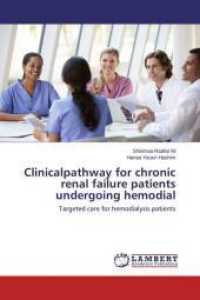- ホーム
- > 洋書
- > ドイツ書
- > Mathematics, Sciences & Technology
- > Medicine & Pharmacy
- > dentistry & oral medicine
Full Description
Organised in 16 chapters, using a user-friendly writing style, this book covers core topics such as cellular pathology, inflammation, tissue repair, immunopathology, genetic disorders, infectious disease, neoplasia, nutritional and environmental pathology, pain, and pathology of organ systems relevant to the practice of dentistry.








